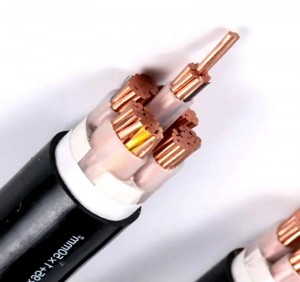
During the early stages of construction, overlooking the performance and rear-end load of cables may potentially lead to significant fire hazards. Today, I'll discuss the six major elements to consider for the fire-retardant rating of wires and cables in project engineering design.
1. Cable Installation Environment:
The environment for cable installation largely determines the likelihood of cable exposure to external fire sources and the extent of spreading after ignition. For instance, cables directly buried or individually piped may use non-fire-retardant cables, while those placed in semi-closed cable trays, trenches, or dedicated cable ducts may lower the fire-retardant requirements by one to two levels. It's advisable to opt for Class C or even Class D fire-retardant cables in such environments where external intrusion opportunities are limited, making combustion less likely and easier to self-extinguish.
2. Quantity of Cables Installed:
The quantity of cables affects the level of fire-retardance. The number of non-metallic cable materials in the same space determines the fire-retardant category. For instance, in situations where fireproof boards isolate each other in the same channel or box, each bridge or box is counted as a separate space. However, if there is no isolation between these, and once a fire occurs, mutual influence takes place, which should be collectively considered for non-metallic cable volume calculation.
3. Cable Diameter:
After determining the volume of non-metallic objects in the same channel, the cable's outer diameter is observed. If smaller diameters (below 20mm) dominate, a stricter approach to fire-retardance is recommended. Conversely, if larger diameters (above 40mm) are prevalent, a preference towards lower levels is suggested. Smaller diameter cables absorb less heat and are easier to ignite, while larger ones absorb more heat and are less prone to ignition.
4. Avoid Mixing Fire-Retardant and Non-Fire-Retardant Cables in the Same Channel:
It's advisable for cables laid in the same channel to have consistent or similar fire-retardant levels. Lower-level or non-fire-retardant cables' post-ignition could act as external fire sources for higher-level cables, increasing the possibility of even Class A fire-retardant cables catching fire.
5. Determine the Fire-Retardant Level Depending on the Importance of the Project and the Depth of Fire Hazards:
For major projects like skyscrapers, banking and financial centers, large or extra-large venues with concentrated crowds, higher fire-retardant levels are recommended under similar conditions. Low smoke, halogen-free, fire-resistant cables are suggested.
6. Isolation Between Power and Non-Power Cables:
Power cables are more prone to fire as they operate in a heated state with a potential for short-circuit breakdowns. Control cables, having low voltage and small loads, remain cool and are less likely to ignite. Therefore, it's advised to isolate them in the same space, with power cables above, control cables below, with fireproof isolation measures in between to prevent burning debris from falling.
ONEWORLD has years of experience in supplying cable raw materials, serving cable manufacturers worldwide. If you have any requirements for fire-retardant cable raw materials, please feel free to contact us.
Post time: Jan-08-2024

